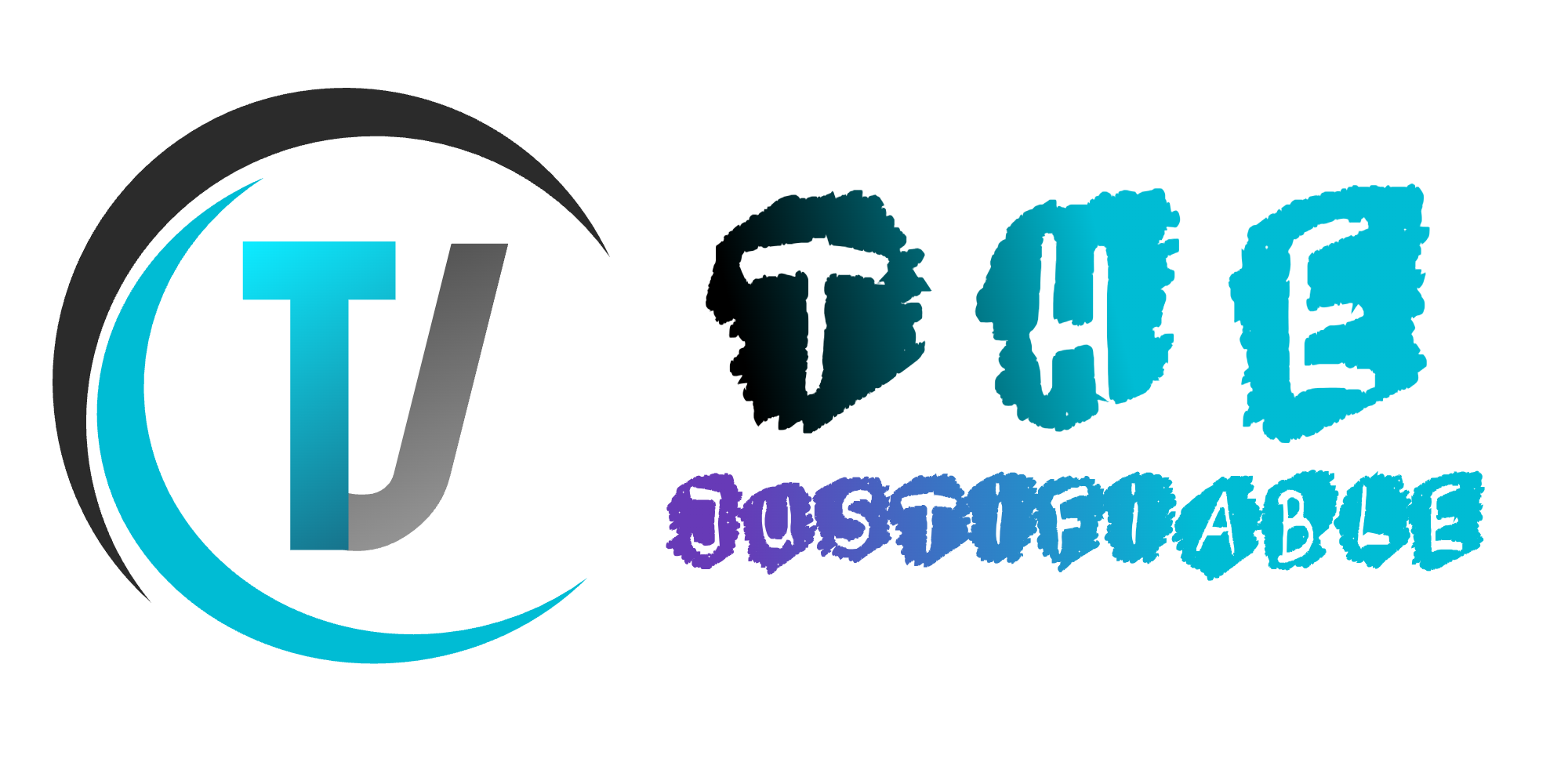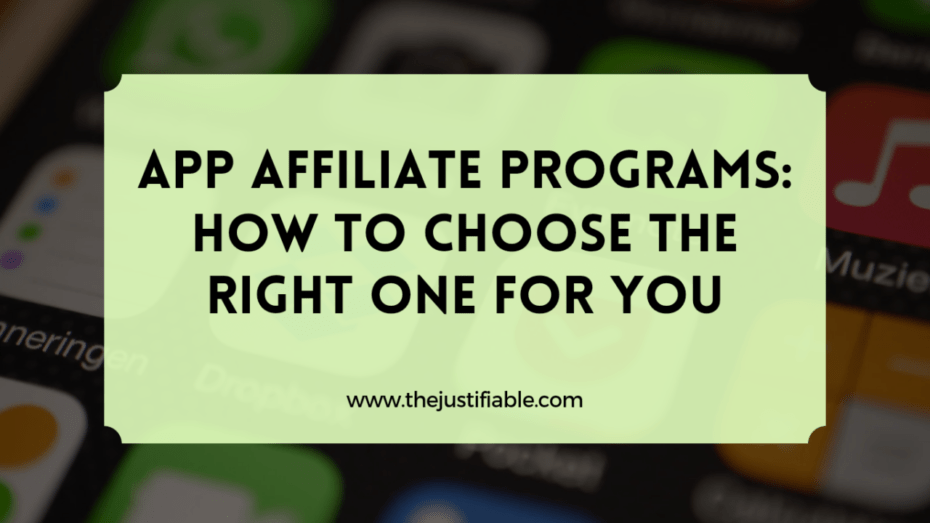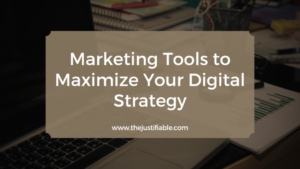Table of Contents
A social media marketing strategy can make or break your brand’s online success. But where do you start? Which platforms should you focus on? How do you create content that actually engages your audience?
If these questions sound familiar, you’re in the right place. Whether you’re a business owner, a marketer, or just starting out, this guide will walk you through every step of building a powerful social media presence from scratch.
By the end, you’ll have a clear, actionable plan to grow your audience, increase engagement, and drive real results. Let’s dive in!
Define Your Social Media Goals
Before jumping into content creation or engagement strategies, it’s essential to establish clear goals for your social media marketing strategy. Without direction, it’s easy to waste time and resources on activities that don’t drive meaningful results. By defining specific goals, you’ll have a structured plan that aligns with your overall business objectives, helping you measure success more effectively.
Align Goals with Business Objectives
Every successful social media marketing strategy starts with goals that align with broader business objectives. Social media isn’t just about getting likes or comments—it should contribute to tangible business growth.
For example, if you’re running an e-commerce brand, your objective might be increasing sales through Instagram and Facebook. A SaaS company, on the other hand, might focus on generating leads via LinkedIn. Aligning social media goals with business objectives ensures every post, campaign, and interaction has a clear purpose.
To make this alignment work:
- Identify your company’s primary business goals (e.g., sales growth, customer retention, brand awareness).
- Define how social media can directly support these goals.
- Assign measurable targets (e.g., a 20% increase in website traffic through social media referrals).
When social media efforts contribute directly to revenue, customer retention, or brand positioning, it becomes easier to justify investments in content, ads, and engagement strategies.
Set SMART Goals for Measurable Success
Setting vague goals like “grow my audience” or “get more engagement” isn’t enough. The key to success is using SMART goals—Specific, Measurable, Achievable, Relevant, and Time-bound.
Let’s break it down:
- Specific: Instead of “increase brand awareness,” aim for “grow Instagram followers by 15%.”
- Measurable: Track progress using analytics tools. If engagement is the goal, monitor likes, shares, and comments.
- Achievable: Set realistic benchmarks. If you’re starting with 500 followers, aiming for 10,000 in a month isn’t practical.
- Relevant: Ensure the goal supports your overall business strategy. A B2B brand might prioritize LinkedIn engagement over TikTok views.
- Time-bound: Set deadlines. Example: “Increase LinkedIn engagement by 25% within 3 months.”
Having clear, SMART goals prevents frustration and keeps your social media marketing strategy on track. It also helps you pivot when necessary, ensuring continuous improvement.
Prioritize Key Performance Indicators (KPIs)
Once you’ve set goals, the next step is identifying the right Key Performance Indicators (KPIs) to track success. KPIs provide concrete data to measure progress and refine your strategy.
Common social media KPIs include:
- Engagement Rate: Likes, comments, shares, and saves—these indicate how well your content resonates with your audience.
- Follower Growth: A steady increase in followers suggests brand awareness is improving.
- Click-Through Rate (CTR): Measures how many people click on your links, helping gauge content effectiveness.
- Conversion Rate: Tracks how many social media visitors take desired actions, like signing up for a newsletter or making a purchase.
- Customer Response Time: How quickly you respond to messages and comments impacts customer satisfaction.
Focusing on the right KPIs ensures you’re making data-driven decisions. For example, if engagement is high but sales remain stagnant, you might need to adjust your social media marketing strategy to include more direct calls to action or promotional content.
Pro Tip: Use social media analytics tools like Meta Business Suite, Google Analytics, or Sprout Social to track KPIs in real time and optimize your strategy accordingly.
Understand Your Target Audience

A successful social media marketing strategy starts with a deep understanding of your audience. Who are they? What content do they engage with? Without these insights, your efforts might fall flat. Instead of guessing, take a data-driven approach to discover what resonates with your ideal customers and tailor your content accordingly.
Conduct Market Research for Audience Insights
Market research helps you uncover your audience’s demographics, interests, and behaviors. Rather than assuming what they want, use real data to inform your strategy.
One effective way to gather insights is through social media analytics tools like Facebook Audience Insights, Instagram Insights, and LinkedIn Analytics. These platforms provide information on age, location, gender, and online habits. You can also explore Google Analytics to track where social media visitors go after clicking on your content.
Here’s how to conduct market research effectively:
- Analyze existing customer data: If you already have a customer base, examine purchase history, feedback, and engagement patterns.
- Use surveys and polls: Directly ask your audience about their interests, preferences, and pain points.
- Explore industry reports and trends: Platforms like Statista and BuzzSumo provide valuable social media behavior insights.
- Monitor social conversations: Check hashtags, forums, and Facebook groups related to your industry to see what people discuss.
By gathering this data, you can create content that speaks directly to your audience’s needs, increasing engagement and brand loyalty.
Analyze Competitor Strategies and Audience Engagement
Your competitors have already tested what works—and what doesn’t—so studying them can fast-track your social media marketing strategy. Instead of copying their content, analyze their approach and find opportunities to differentiate your brand.
Start with a competitor audit:
- Identify key competitors using tools like Sprout Social or SEMrush’s Social Media Tracker.
- Evaluate their content performance—which posts get the most likes, shares, and comments?
- Observe engagement patterns—how often do they post, and when does their audience respond most?
- Analyze their tone and visuals—do they use humor, storytelling, or industry jargon?
If a competitor consistently receives high engagement on educational content, it suggests their audience values in-depth insights. If their video content outperforms static posts, it signals a preference for dynamic visuals. Use these observations to refine your strategy while maintaining your unique voice.
Create Detailed Buyer Personas
A buyer persona is a semi-fictional representation of your ideal customer based on research and data. Instead of targeting a broad audience, personas help you craft content that speaks directly to specific segments of your market.
A well-defined persona includes:
- Demographics: Age, gender, income level, location
- Psychographics: Interests, values, lifestyle choices
- Pain points: Challenges or problems they want to solve
- Preferred social platforms: Where they spend most of their time online
- Buying behavior: What influences their purchasing decisions?
For example, if you’re a fitness brand, one of your personas might be:
📌 Name: Fitness-Focused Millennial
📌 Age: 25-34
📌 Pain Point: Struggles with motivation and consistency
📌 Preferred Platform: Instagram and TikTok
📌 Content Preference: Short workout videos, transformation stories, and fitness tips
When you create content tailored to specific personas, you increase the chances of engagement and conversions. Every post should feel like it was made just for them.
Pro Tip: Don’t rely on one-time research. Regularly revisit and update your audience insights to keep up with changing trends and preferences. Your audience’s needs evolve, and so should your social media marketing strategy.
Choose the Right Social Media Platforms
Selecting the right platforms is a crucial step in your social media marketing strategy. Each platform serves different types of content and attracts unique audiences. Instead of spreading yourself thin, focus on the ones that align with your business goals and where your target audience is most active.
A well-chosen platform mix will maximize engagement, brand visibility, and conversions.
Identify Platforms That Suit Your Business Goals
Not all social media platforms are created equal. The best ones for your business will depend on what you want to achieve. Are you looking to generate leads? Increase brand awareness? Drive direct sales? Defining your business goals helps narrow down your platform choices.
Here’s how different goals align with various platforms:
- Brand awareness & community building: Instagram, TikTok, Facebook
- Lead generation & B2B networking: LinkedIn, Twitter
- Sales & direct conversions: Facebook, Instagram, Pinterest
- Customer support & engagement: Twitter, Facebook, WhatsApp
- Video-based marketing: YouTube, TikTok, Instagram Reels
For instance, if you run a B2B company, LinkedIn will likely deliver better results than Instagram. If you’re an e-commerce brand, Instagram and Pinterest can showcase products visually and drive conversions. Matching the right platform to your goal ensures every effort contributes to measurable success.
Understand Platform Demographics and Trends
Each social platform has its own audience demographic. Understanding who uses which platform helps you target the right people effectively.
Here’s a quick breakdown of social media demographics:
- Facebook: Used by all age groups, but strongest among 25-44-year-olds. Great for community engagement and paid ads.
- Instagram: Popular among 18-34-year-olds. Ideal for visual storytelling and influencer marketing.
- TikTok: Dominated by Gen Z and Millennials. Best for short-form video content and viral trends.
- LinkedIn: Primarily professionals and decision-makers, with a focus on B2B networking.
- Twitter (X): A mix of young adults and professionals, good for real-time updates and thought leadership.
- Pinterest: Strong female user base, great for lifestyle, fashion, home decor, and DIY brands.
- YouTube: Appeals to all ages, making it powerful for long-form educational and entertainment content.
- Reddit: Rapidly growing among 18–29-year-olds. Known for niche communities and authentic discussions.
Trends also matter. Short-form videos, live streaming, and interactive content (like polls and Q&A sessions) are gaining traction across multiple platforms. If your audience engages with these trends, incorporating them into your social media marketing strategy will boost reach and engagement.
Focus on High-Impact Channels for Engagement
It’s tempting to try every social media platform, but managing too many accounts can dilute your efforts. Instead, prioritize high-impact channels where you can build meaningful engagement.
Ask yourself these questions:
- Where does your audience spend most of their time? Check analytics tools to see where your website traffic and engagement come from.
- Which platforms generate the most interaction? Platforms with high engagement rates drive better results than those with passive followers.
- Does the platform align with your content style? If you create a lot of video content, YouTube or TikTok might be a better choice than LinkedIn.
Choosing the right platforms doesn’t mean you must stick to only one or two. It means investing your time where it matters most. A strong, focused presence on fewer platforms is far more effective than a scattered, inconsistent approach across too many.
Develop a Content Strategy That Engages

A well-crafted content strategy is the backbone of a successful social media marketing strategy. It’s not just about posting regularly; it’s about creating content that resonates with your audience, encourages engagement, and drives action.
A strong content strategy balances different content types, incorporates compelling visuals, and follows a structured posting schedule to maintain consistency.
Plan a Balanced Content Mix (Educational, Promotional, Entertaining)
One of the biggest mistakes businesses make on social media is focusing too much on selling. Nobody wants to be bombarded with sales pitches. Instead, a balanced content mix that includes educational, promotional, and entertaining content keeps your audience engaged and prevents fatigue.
Here’s how to structure your content mix effectively:
- Educational Content: Helps your audience learn something valuable. Examples include how-to guides, industry tips, infographics, and expert insights. If you’re a fitness brand, this might be workout tips or nutrition guides.
- Promotional Content: Showcases your products, services, or offers, but in a way that adds value. Instead of just saying, “Buy this,” highlight benefits, share testimonials, or run limited-time promotions.
- Entertaining Content: Keeps your audience engaged and encourages shares. This could be behind-the-scenes videos, relatable memes, storytelling posts, or interactive challenges.
A common approach is the 80/20 rule—80% of your content should provide value (educational or entertaining), while 20% should promote your business. This keeps your audience engaged without making your brand feel too sales-driven.
Leverage Visuals, Videos, and Interactive Content
The way people consume content on social media is shifting. Static text posts no longer get the same traction as visuals and interactive formats. Investing in high-quality graphics, short-form videos, and interactive features can significantly improve engagement.
Here’s why visuals are a game-changer in your social media marketing strategy:
- Videos: Short-form videos (like TikToks, Instagram Reels, and YouTube Shorts) capture attention quickly and perform exceptionally well in algorithms. Tutorials, behind-the-scenes clips, and product demos are great ways to showcase value.
- Infographics: These provide quick, digestible information in a visually appealing format. Great for statistics, step-by-step guides, or industry insights.
- Carousels and Slideshows: Perfect for platforms like Instagram and LinkedIn, where users can swipe through multiple images or insights in one post.
- Interactive Content: Polls, quizzes, question stickers, and live Q&A sessions encourage audience participation, making them feel connected to your brand.
The more engaging your content, the higher the chance of shares, comments, and saves—key metrics that boost visibility in social media algorithms.
Establish a Consistent Posting Schedule
Even the best content won’t be effective if it’s posted sporadically. Consistency builds trust with your audience and signals to social media algorithms that your brand is active and relevant. But consistency doesn’t mean posting constantly—it means posting at a pace that you can sustain without sacrificing quality.
Here’s how to create a manageable posting schedule:
- Determine posting frequency: Aim for quality over quantity. Posting 3-5 times a week is often better than daily posts with low engagement.
- Find the best posting times: Use platform analytics to identify when your audience is most active. For example, Instagram insights might show that your audience engages most in the evening, while LinkedIn might perform better in the morning.
- Use a content calendar: Planning your content a month in advance ensures variety and prevents last-minute stress. Tools like Trello, Notion, or Later can help organize your posts.
- Automate when possible: Scheduling tools like Buffer, Hootsuite, or Meta Business Suite can streamline posting and free up time for engagement.
Sticking to a schedule keeps your brand top of mind and helps establish a reliable online presence. Over time, your audience will know when to expect new content, making them more likely to engage with your posts.
Pro Tip: Test different content formats and posting times to see what works best for your audience. Monitor engagement rates and refine your approach based on data-driven insights to optimize your social media marketing strategy.
Optimize Your Social Media Profiles
Your social media marketing strategy is only as strong as your profiles. A well-optimized profile builds credibility, attracts followers, and improves discoverability. From visuals to descriptions, every element should reflect your brand identity and make it easy for people to connect with you.
Use High-Quality Images and Brand Consistency
First impressions matter. When someone visits your social media profile, the visuals are the first thing they notice. High-quality images and consistent branding make your page look professional and trustworthy.
Here’s how to ensure strong visual branding:
- Profile Picture: Use a clear, high-resolution image. For businesses, this is usually a logo. For personal brands, a professional headshot works best.
- Cover Photos and Background Images: On platforms like Facebook, LinkedIn, and Twitter, cover photos are prime real estate. Use them for branding, promotional messaging, or showcasing your latest campaign.
- Color Scheme and Fonts: Stick to a consistent color palette and typography across all platforms. This creates brand recognition.
- Content Aesthetic: Whether it’s Instagram’s grid layout or YouTube thumbnails, maintaining a uniform style enhances brand identity.
Strong visual consistency makes your brand memorable and builds trust with your audience.
Write Compelling Bios with Strong Calls to Action
Your bio is your digital elevator pitch. It should be clear, engaging, and informative, giving visitors a reason to follow you.
Here’s what makes a great bio:
- Clarity: State who you are and what you offer in a straightforward way.
- Value Proposition: Highlight what makes your brand unique or how you help your audience.
- Personality: Inject some personality to make it more relatable. Humor, emojis, or a catchy tagline can make a bio stand out.
- Call to Action (CTA): Encourage users to take the next step—visit your website, sign up for a newsletter, or check out your latest post.
For example, a fitness coach might write:
💪 Helping busy professionals stay fit in 20 mins a day!
📩 DM for coaching inquiries
🎯 Free workout plan ⬇️ [Link]
Strong bios clarify your brand’s purpose and encourage engagement.
Include Relevant Keywords and Hashtags
Just like SEO helps websites rank on Google, keywords and hashtags improve visibility on social media. Using the right words in your profile increases the chances of appearing in search results.
Here’s how to optimize for searchability:
- Include Industry-Specific Keywords: Think about what your audience would search for. A digital marketer might use terms like “SEO expert” or “content strategist.”
- Use Hashtags Strategically: Platforms like Instagram, LinkedIn, and TikTok allow hashtags in bios. Use relevant ones to increase discoverability.
- Optimize Username and Handle: If possible, use a name that aligns with your brand. If your business is “Elite Fitness,” your handle could be @EliteFitnessHQ for consistency.
Strong keyword and hashtag placement makes your profile easier to find, helping you attract the right audience.
Pro Tip: Regularly update your profile to reflect new campaigns, offers, or branding changes. An outdated bio or low-quality visuals can make your brand look inactive or unprofessional.
Create a Content Calendar for Consistency

A successful social media marketing strategy isn’t just about what you post—it’s also about when and how consistently you share content. A content calendar helps you stay organized, maintain a steady flow of posts, and maximize audience engagement. Without a structured plan, it’s easy to fall into the trap of irregular posting, leading to lower reach and engagement.
Plan Posts According to Peak Engagement Times
Posting content when your audience is most active increases visibility and engagement. Every social media platform has different peak times, and knowing when your audience is online ensures your content gets seen.
To determine the best times to post:
- Check platform insights: Most social media platforms provide analytics on when your audience is most active. Facebook, Instagram, and LinkedIn all have built-in tools to track peak hours.
- Experiment and track results: Test posting at different times and monitor engagement levels. If your audience interacts more in the evening, adjust your schedule accordingly.
- Consider time zones: If you have a global audience, schedule posts to reach different regions at optimal times.
For example, studies suggest that:
📌 Instagram engagement peaks between 6-9 PM on weekdays.
📌 LinkedIn posts perform best during work hours (8 AM-2 PM) on Tuesdays and Wednesdays.
📌 Twitter (X) activity spikes during lunch breaks (12-3 PM) and evenings.
Aligning your posts with these peak times helps boost impressions and engagement.
Use Automation Tools to Schedule and Manage Content
Managing social media manually can be overwhelming, especially when posting across multiple platforms. Automation tools streamline the process, ensuring content is published on time without constant manual effort.
Popular scheduling tools include:
- Hootsuite: Allows scheduling across multiple platforms with a user-friendly interface.
- Buffer: Simplifies post planning and provides analytics to track performance.
- Later: Great for Instagram and visual content scheduling.
- Meta Business Suite: Best for managing Facebook and Instagram accounts in one place.
Using automation doesn’t mean setting and forgetting. It helps you stay consistent while freeing up time to focus on engaging with your audience in real-time.
Maintain Flexibility for Real-Time Engagement
While a content calendar ensures consistency, social media thrives on spontaneity. Trends emerge, conversations happen, and unexpected opportunities arise. A rigid schedule can make your content feel disconnected from what’s happening in real-time.
Here’s how to balance planned content with flexibility:
- Leave room for trending topics: If a viral trend aligns with your brand, adjust your schedule to join the conversation.
- Engage with followers actively: Reply to comments, share user-generated content, and interact with your audience beyond scheduled posts.
- Monitor industry updates: If something newsworthy happens in your niche, share insights or reactions promptly.
For example, if a major event related to your industry is trending, resharing an existing post might not be as effective as creating fresh, relevant content.
Pro Tip: Use a mix of scheduled and real-time content. A structured plan helps with consistency, while adaptability keeps your social media marketing strategy relevant and engaging.
Engage and Interact with Your Audience
A social media marketing strategy isn’t just about posting content—it’s about building relationships. Engagement is what transforms followers into loyal customers and brand advocates. Responding to comments, running interactive content, and collaborating with influencers can strengthen audience connections and boost visibility.
Respond to Comments, Messages, and Mentions
Timely responses show your audience that you value their input. Social media is a two-way conversation, and engaging with your audience fosters trust and encourages future interactions. Ignoring messages or comments can make your brand seem unapproachable, leading to lower engagement.
Here’s how to manage interactions effectively:
- Reply to Comments Promptly: Whether it’s a simple “thank you” or a detailed answer, acknowledging comments makes followers feel heard.
- Engage in Conversations: Ask follow-up questions or share insights to keep discussions going.
- Respond to Mentions: If someone tags your brand, engage with the post to show appreciation.
- Handle Negative Feedback Professionally: Instead of deleting critical comments, address concerns constructively. Transparency improves credibility.
A study from Sprout Social found that 79% of consumers expect brands to respond within 24 hours. The faster you engage, the better your chances of building lasting relationships.
Run Polls, Q&A Sessions, and Contests
Interactive content encourages participation, making your audience feel involved with your brand. Polls, Q&A sessions, and contests are powerful ways to spark engagement and gather valuable feedback.
- Polls: Use Instagram Stories, Twitter, or LinkedIn to ask your audience’s opinions on topics related to your brand. Questions like “What type of content do you want to see next?” can help shape your future posts.
- Q&A Sessions: Hosting live Q&A sessions on Instagram, Facebook, or LinkedIn allows you to connect with your audience in real time. It’s a great way to answer customer questions and establish authority in your niche.
- Contests and Giveaways: Encourage followers to participate in contests where they can win a product or exclusive discount. Entry methods can include liking a post, tagging friends, or sharing content.
These strategies boost engagement while making your audience feel like an active part of your brand’s journey.
Collaborate with Influencers and Brand Advocates
Influencer marketing is a game-changer for expanding reach and credibility. Partnering with influencers and loyal brand advocates allows you to tap into their established audiences and build trust faster.
Here’s how to collaborate effectively:
- Identify the Right Influencers: Choose influencers who align with your brand values and audience. A micro-influencer (10K-50K followers) often has higher engagement rates than a mega-influencer.
- Encourage User-Generated Content (UGC): Feature customer testimonials, reviews, and photos of people using your product. UGC builds trust and authenticity.
- Host Takeovers: Invite influencers or brand advocates to take over your social media account for a day. This provides fresh content and engages their audience with your brand.
- Create Long-Term Partnerships: Instead of one-off promotions, build ongoing relationships with influencers to establish consistent brand messaging.
Leveraging influencer collaborations adds credibility and increases visibility, making your social media marketing strategy more impactful.
Pro Tip: Engagement is a two-way street. If you want more comments and shares, start by engaging with your audience first. Respond, react, and participate in conversations to build genuine connections.
Implement Paid Advertising for Growth

While organic reach is valuable, relying solely on it can limit your brand’s growth. A well-planned paid advertising strategy can boost visibility, attract targeted audiences, and drive conversions. Whether you’re looking to increase brand awareness or generate direct sales, investing in paid ads as part of your social media marketing strategy can deliver faster and more measurable results.
Choose the Right Ad Formats for Each Platform
Not all ads perform the same across every platform. Each social media network offers unique ad formats designed to engage users in different ways. Choosing the right format depends on your campaign goals, target audience, and the type of content that resonates with them.
Here’s a breakdown of popular ad formats:
- Facebook & Instagram Ads: Options include carousel ads, video ads, stories, and lead generation ads. Great for increasing engagement and driving website traffic.
- LinkedIn Ads: Sponsored content, InMail ads, and lead forms work well for B2B businesses targeting professionals.
- TikTok & YouTube Ads: Best for video-based marketing with formats like skippable ads, in-feed ads, and branded hashtag challenges.
- Twitter (X) Ads: Promoted tweets and trending topic promotions help boost visibility and engagement.
- Pinterest Ads: Ideal for e-commerce brands, featuring promoted pins and shopping ads to inspire purchases.
Choosing the right ad format ensures your budget is spent on content that delivers the highest ROI. For example, a fashion brand might see better engagement with Instagram Stories, while a B2B company would benefit more from LinkedIn’s sponsored content.
Set a Budget and Optimize Ad Performance
A well-structured budget prevents overspending while ensuring you get the most out of your advertising efforts. Social media platforms allow you to set daily or lifetime budgets, so it’s crucial to allocate funds wisely.
To optimize your budget:
- Start Small and Scale Up: Run test campaigns with a low budget to gauge performance before increasing spend.
- Define Clear Objectives: Whether it’s website visits, lead generation, or sales, ensure your goals align with your budget.
- Monitor Cost-Per-Result (CPR): Track metrics like cost-per-click (CPC), cost-per-lead (CPL), and return on ad spend (ROAS) to measure efficiency.
- Use A/B Testing: Experiment with different ad creatives, headlines, and targeting options to see what performs best.
- Adjust in Real-Time: If an ad underperforms, tweak your strategy rather than letting it run without results.
An optimized budget ensures that every dollar spent contributes to tangible growth. Over time, analyzing performance data helps refine your social media marketing strategy for better ad efficiency.
Use Retargeting to Maximize Conversions
Most users don’t convert the first time they see an ad. Retargeting allows you to reconnect with visitors who have interacted with your brand but didn’t complete a desired action, such as making a purchase or signing up for a newsletter.
How retargeting works:
- Pixel Tracking: Platforms like Facebook and Google allow you to install a tracking pixel on your website to collect visitor data.
- Dynamic Retargeting Ads: Show customized ads based on a user’s previous behavior (e.g., abandoned carts, product views).
- Lookalike Audiences: Reach new users with similar characteristics to your existing customers.
- Email Retargeting: Sync email lists with ad platforms to serve personalized ads to subscribers who haven’t engaged recently.
Retargeting keeps your brand top-of-mind and increases the chances of conversion. Since these ads target users already familiar with your brand, they often result in higher engagement and lower acquisition costs.
Pro Tip: To make the most of paid ads, combine them with organic engagement efforts. A strong social media marketing strategy integrates both approaches, ensuring long-term growth and sustained audience interest.
Track, Analyze, and Adjust Your Strategy
A social media marketing strategy is never set in stone. What works today might not work tomorrow. Tracking performance, analyzing data, and making adjustments ensures your efforts drive real results. Without regular monitoring, you could waste time and resources on tactics that don’t contribute to your goals.
Use Analytics Tools to Measure Performance
To refine your strategy, you need data-driven insights. Social media analytics tools provide valuable metrics that reveal what’s working and what needs improvement.
Popular analytics tools include:
- Meta Business Suite (Facebook & Instagram): Tracks reach, engagement, and audience demographics.
- Twitter (X) Analytics: Shows impressions, tweet interactions, and follower growth.
- LinkedIn Analytics: Highlights profile views, post engagement, and company page performance.
- Google Analytics: Helps measure social media-driven website traffic and conversions.
- Hootsuite & Sprout Social: Offers in-depth analytics across multiple platforms.
Using these tools, you can identify trends and patterns. If video content consistently performs better than static images, it may be worth shifting focus. Data eliminates guesswork, allowing you to make informed decisions.
Monitor Engagement, Reach, and Conversion Metrics
Key performance indicators (KPIs) measure the success of your social media marketing strategy. While vanity metrics like likes and followers look impressive, deeper engagement and conversion metrics offer real insight.
Here are the essential metrics to track:
- Engagement Rate: Likes, comments, shares, and saves indicate how interactive your content is.
- Reach and Impressions: Shows how many people see your posts and how often.
- Click-Through Rate (CTR): Measures how many users click links to visit your website or landing page.
- Conversion Rate: Tracks actions taken after clicking—purchases, sign-ups, or downloads.
- Follower Growth: A steady increase in followers suggests strong brand awareness and interest.
If engagement is high but conversions are low, your content might need stronger calls to action. Tracking these numbers helps identify gaps and refine your approach.
Adapt Strategies Based on Data Insights
Analyzing data is only useful if you apply it. Reviewing performance trends enables you to adjust and optimize your social media marketing strategy for better results.
Ways to adapt your approach:
- Test Different Content Formats: If carousel posts drive more engagement than single images, create more interactive slideshows.
- Adjust Posting Times: If engagement peaks at certain hours, schedule posts accordingly.
- Refine Audience Targeting: If ads aren’t converting, tweak targeting parameters based on insights from previous campaigns.
- Improve Messaging: If posts with storytelling perform better than generic promotional content, shift toward more authentic brand narratives.
Tracking and adapting ensures that every action taken aligns with your business objectives and maximizes return on investment.
Stay Updated with Social Media Trends
Social media is constantly evolving, and what worked yesterday might not be effective tomorrow. Keeping up with trends ensures your social media marketing strategy stays relevant, engaging, and aligned with audience expectations. Staying ahead of changes in algorithms, features, and user behavior gives your brand a competitive edge.
Follow Industry Leaders and Social Media Updates
To stay ahead in social media marketing, it’s essential to follow key influencers, industry leaders, and platform updates. Social media platforms frequently update their algorithms, features, and best practices, so staying informed helps you adapt quickly.
Here’s how to keep up with industry changes:
- Follow Official Platform Blogs & Updates: Facebook Newsroom, Instagram Blog, LinkedIn Blog, and Twitter (X) Business provide real-time updates on changes to algorithms, ad policies, and new features.
- Engage with Industry Leaders: Experts like Gary Vaynerchuk, Neil Patel, and Matt Navarra regularly share insights on trends, helping brands stay ahead.
- Join Social Media Groups & Communities: Platforms like Facebook, LinkedIn, and Reddit have dedicated groups where professionals discuss strategies and industry shifts.
- Subscribe to Digital Marketing Newsletters: Resources like Social Media Examiner, HubSpot, and Sprout Social publish updates on emerging trends and strategies.
Regularly consuming this information keeps you informed about shifts in audience preferences, content formats, and engagement tactics.
Experiment with Emerging Features and Trends
Social media platforms introduce new features frequently, and early adopters often gain a competitive advantage. Brands that quickly integrate emerging trends into their social media marketing strategy tend to see better engagement and reach.
Here’s how to effectively experiment with new features:
- Try New Content Formats: Instagram Reels, YouTube Shorts, and TikTok videos have skyrocketed in popularity. Testing these formats can help you reach a broader audience.
- Leverage Interactive Content: Polls, Q&A sessions, and live videos create real-time engagement and foster community building.
- Test AI-Powered Tools: Many platforms now use AI-driven recommendations for content creation and audience targeting. Tools like ChatGPT, Canva AI, and Meta’s Advantage+ can enhance marketing efforts.
- Explore Social Commerce Trends: Instagram and TikTok are integrating e-commerce features, making it easier for brands to sell directly on social media.
- Monitor Trending Hashtags & Challenges: Participating in viral trends can boost visibility, but ensure they align with your brand identity.
Experimenting with new trends helps brands stay ahead of the curve while discovering what resonates best with their audience.
Continuously Refine Your Strategy for Long-Term Success
Success in social media marketing requires ongoing optimization. Strategies that worked months ago might lose effectiveness as platforms evolve and audience behaviors shift. Regularly refining your approach based on data and trends ensures long-term growth.
Ways to continuously refine your strategy:
- Analyze Performance Metrics: Use analytics tools to assess what’s working and make adjustments where needed.
- Stay Flexible & Adaptable: Avoid rigid planning—leave room for real-time engagement and trend-driven content.
- Gather Audience Feedback: Pay attention to comments, messages, and surveys to understand what your audience values.
- Revise Content Strategies: If video content outperforms static posts, consider shifting more resources to video production.
- Test & Iterate: A/B test different post types, captions, and ad creatives to refine your approach continuously.
The key to long-term success in social media marketing is staying adaptable. Brands that embrace change and continuously optimize their strategies will always have a strong presence in the digital landscape.
Pro Tip: Don’t chase every trend. Instead, focus on trends that align with your brand and resonate with your target audience. A thoughtful, data-driven approach to social media evolution will keep your strategy effective and impactful.






